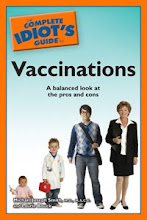The modern
HIV/AIDS epidemic began in California and New York in 1981, and was seen primarily as a disease limited to gay men, injection drug users, and hemophiliacs (remember
Ryan White?). Today, however, the disease demographic has shifted radically. About half the people living with HIV/AIDS worldwide now are women of childbearing age, and many of these women want to become pregnant.
The Harvard School of Public Health just released a report that explores this issue,
"The Pregnancy Intentions of HIV-Positive Women: Forwarding the Research Agenda." Despite its academic tone, the report is full of riveting information about HIV-positive women and pregnancy worldwide that is sure to spark discussions among the people who read it. The report favors supporting HIV-positive women who want to become pregnant, even in resource-poor countries where health care funding is already strained.
An HIV-positive woman who wants to become pregnant faces three main issues. First of all, she might transmit the virus to her male partner. Even if both she and her partner have HIV, they could still transmit different strains of HIV to each other. Secondly, the woman needs to try to prevent transmitting HIV to the child during pregnancy, labor and delivery, and while breastfeeding (the HIV virus can be transmitted through breast milk). Lastly, the woman needs to stay healthy enough to raise the child.
To help HIV-positive women become pregnant without infecting their partners, the report suggests providing access to assisted reproductive technologies, such as in-vitro fertilization and artificial insemination. The report's authors admit that this is not a great solution. They explain that:
For those who are already on antiretroviral therapy, the combined expenses of ART [antiretroviral therapy] and assisted reproductive technologies are simply out of reach. Even when available, the idea that assisted reproductive technologies could be used by women who are HIV-positive appears to be strongly opposed. This is an area where stigma and discrimination are highly manifest.... many health care providers express the view that HIV-positive women should not have children and should certainly not have access to expensive technologies to help them do so.
Once an HIV-positive woman is pregnant, keeping her and her child healthy is another expensive, complicated hurdle. The woman needs to consistently take expensive
antiretroviral therapy (ART) drugs throughout pregnancy and breastfeeding to help prevent transmitting HIV to her child. She also needs to take ART for the rest of her life to suppress the virus and its symptoms and stay healthier.
Parts of the report made me think that helping HIV-positive women get pregnant in resource-poor countries was a Very Bad Idea. For example, paying for reproductive technologies in a resource-poor country is a questionable use of resources. In poorer countries,
less than half of people who need HIV treatment get it, according to the HIV/AIDS charity AVERT. Shouldn't limited health care money be used for HIV/AIDS education, prevention, and treatment, where it would do a greater amount of good for a greater number of people, rather than insemination services?
Apparently not. The Harvard report states that "some NGOs [non-governmental organizations] globally are beginning to pressure governments to provide assisted fertility services for people living with HIV/AIDS." The report's authors believe that HIV-positive women (and their partners) should have the same reproductive rights, including the right to bear children, as women who are not HIV positive.
Other details from the Harvard report, however, made it clear that this issue is far more complicated than it first appears. Here are a few things that struck me from the report:
- Culturally, motherhood confers far more status to women in some countries than anything else they might achieve. A woman who does not have children might be ostracized by her community.
- In some cultures, women who do not have children might be accused of being HIV positive, which makes them seek out pregnancy as a protective measure (even if they are HIV positive).
- In some cultures, women don't feel empowered to insist that their partner use a condom to keep the women from contracting HIV.
- Violence against HIV-positive women is a problem worldwide. Along with physical violence, some HIV-positive women have been forced or coerced into being sterilized. Mexico, Chile, and Namibia, for example, have all been accused of forcing or coercing sterilization on HIV-positive women.
There are no simple answers to the problems that HIV-positive women face. But I question the report's assumption that it's best to enforce local cultural norms by helping these women become pregnant.
Women in
every country need to be able to achieve both social status and financial security independent of whether they are mothers or in a relationship with a man. When women are only valued as child-bearers, they lose much of their influence in both personal and community relationships. They become vulnerable to poverty, violence, and diseases such as HIV/AIDS.
International organizations should take the wider view and focus on improving the status of women worldwide to decrease the incidence of poverty, violence, and disease. For example,
microloan programs and organizations such as
Heifer International, which help women and families become financially self-sufficient, are a great success story. When you improve the lives of women, you solve a lot of underlying societal problems.



